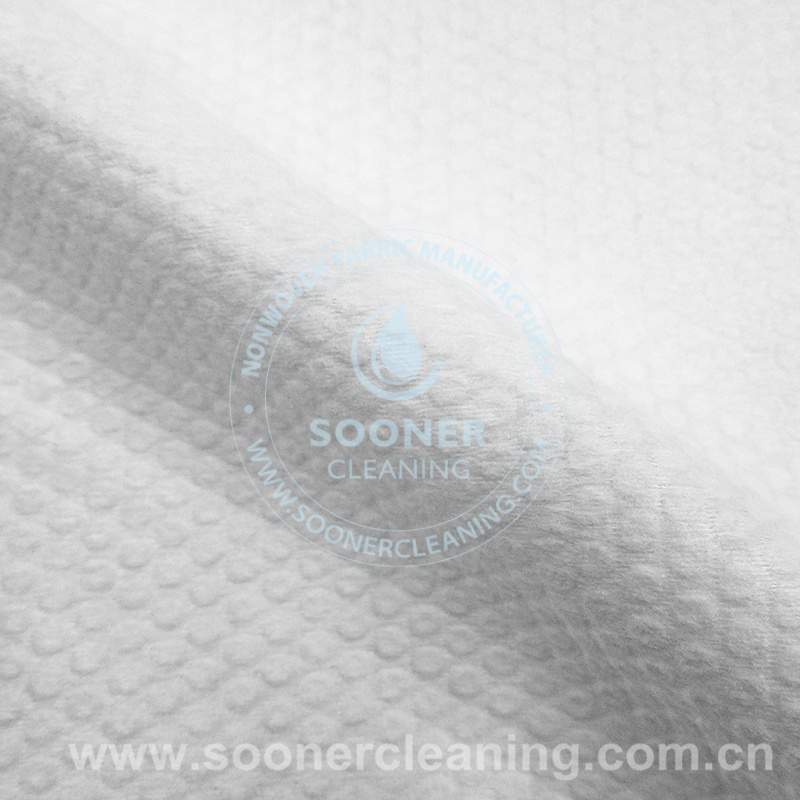With over 2.1 billion tonnes of municipal solid waste generated globally each year, plastic pollution has become a significant burden on oceans and land. Consumers have never been more eager for truly sustainable everyday solutions. Environmental pioneer brands have keenly recognised this trend, turning their attention to a seemingly ordinary yet transformative technology—
biodegradable non-woven fabric—and using it as the core to spark a green consumption revolution from concept to action.
The Environmental Dilemma of Traditional Products and Consumer Awakening
The Shadow of Plastic Wipes: Plastic fibres in traditional wipes are one of the main culprits behind sewer blockages forming ‘fatbergs’ and microplastic pollution in water bodies. Consumers often feel guilty about the environmental impact after using these convenient products.
The Burden on Landfills: Even when discarded, conventional non-woven products continue to weigh heavily on the Earth due to their slow decomposition process.
The Breakthrough Solution: The Core Advantages of Biodegradable Non-Woven Fabrics
Leading eco-friendly brands do not simply replace materials but build a sustainable value system centred on biodegradable non-woven fabrics:
True End-of-Life Friendliness:
Plastic-free and biodegradable: Rejecting plastic fibres, these products use plant fibres (such as wood pulp or cotton) or biodegradable synthetic fibres (such as Lyocell). This is the core foundation of flushable non-woven fabrics.
Rapid Dispersion: Upon contact with water, these fabrics can fully break down and disperse within a short time, smoothly passing through modern wastewater treatment systems to prevent pipe blockages and reduce solid waste entering the natural environment at the source.
Environmental Degradation: Even if accidentally released into the natural environment, it can be decomposed by microorganisms within a short time, significantly reducing ecological risks.
Green Experience Without Compromising Performance:
Strength and Softness Combined: Through innovative processes, flushable wipes and flushable hygiene products maintain cleaning power, comfort, and durability comparable to traditional products.
Safe and Gentle: Typically paired with natural, hypoallergenic formulas to protect skin and health.
Building a closed-loop circular economy:
From ‘disposal’ to ‘flushing’: Changing the final destination of products after use to guide consumers toward more sustainable disposal habits.
Integration with wastewater treatment systems: Incorporating the end-of-life stage of products into urban/community wastewater treatment cycles, reflecting responsible design principles.
Winning the market: The strategic combination of eco-friendly pioneer brands
Having good technology alone is insufficient to win the market. Successful brands understand how to translate this into consumer recognition and market share:
Transparent communication, education first:
Clearly label ‘flushable’ and ‘non-flushable’: Use the ISO flushable logo in a prominent location on product packaging and clearly indicate applicable scenarios (e.g., ‘suitable for flush toilets’) to prevent misuse.
Educate on the principles of ‘flushable’: Use official websites, social media, and packaging instructions to explain how flushable non-woven fabrics safely degrade using simple language and animations, dispelling the misconception that ‘flushable = prone to clogging.’
Publish certifications and test reports: Showcase authoritative certifications such as compliance with INDA/EDANA GD4 standards and wastewater treatment plant compatibility tests to establish professional credibility.
Scenario-based product innovation to address essential needs:
Wet toilet paper revolution: This is the most successful application of flushable non-woven fabrics. Offering family-sized, portable, and sensitive skin-friendly options, it meets diverse needs and is the top choice for hygiene upgrades.
New options for infant care: Develop flushable baby wipes, allowing parents to balance convenience and environmental responsibility.
Innovations in menstrual care: Explore flushable sanitary wipes and other menstrual care products.
Convenient Home Cleaning: Flushable cleaning wipes can be used to clean countertops and bathrooms and then flushed away, enhancing convenience and hygiene.
Building a Distinctive Green Brand Image:
Mission-Driven: Embedding core brand missions such as ‘ending plastic pollution’ and ‘building a circular future’ into all communications.
Authentic Storytelling: Sharing the brand's original motivation for choosing flushable technology, the challenges and breakthroughs during R&D, and evoking emotional resonance.
Community Collaboration: Initiate or participate in environmental activities such as beach clean-ups and water source protection, linking the brand's actions to broader environmental issues.
Omnichannel Reach and Experience:
Online Precision Marketing: Target environmentally conscious audiences through search engines (SEO keywords: eco-friendly wet wipe recommendations, biodegradable wet wipe brands, flushable non-woven fabric manufacturers) and social media (using hashtags like #sustainable living, #plastic reduction initiatives).
As a pioneer in environmental protection, the brand leverages flushable non-woven fabric technology as its core strength to precisely address consumers' urgent demand for sustainable daily solutions. By offering truly biodegradable, end-of-life-friendly products (such as flushable toilet paper and flushable baby wipes), combined with transparent environmental communication, credible authoritative certifications (such as INDA/EDANA GD4), and scenario-based innovations, the brand has successfully established a differentiated competitive advantage. This not only meets consumers' essential need for environmentally friendly, convenient hygiene products but also integrates the product usage phase into the circular economy, fulfilling the brand's commitment to reducing plastic pollution and protecting water resources. Embracing flushable technology is a crucial step for eco-friendly brands to transition from advocates of environmental ideals to market leaders.
This green revolution proves that true environmental protection is not an expensive add-on option but a convenient choice integrated into daily life. When every act of cleaning naturally returns to the earth's cycle, the wipes in consumers' hands become a small force for change. Are you ready to join this sustainable lifestyle transformation led by flushable technology? Explore eco-friendly pioneer brands today and let every choice be a gentle commitment to the earth.


